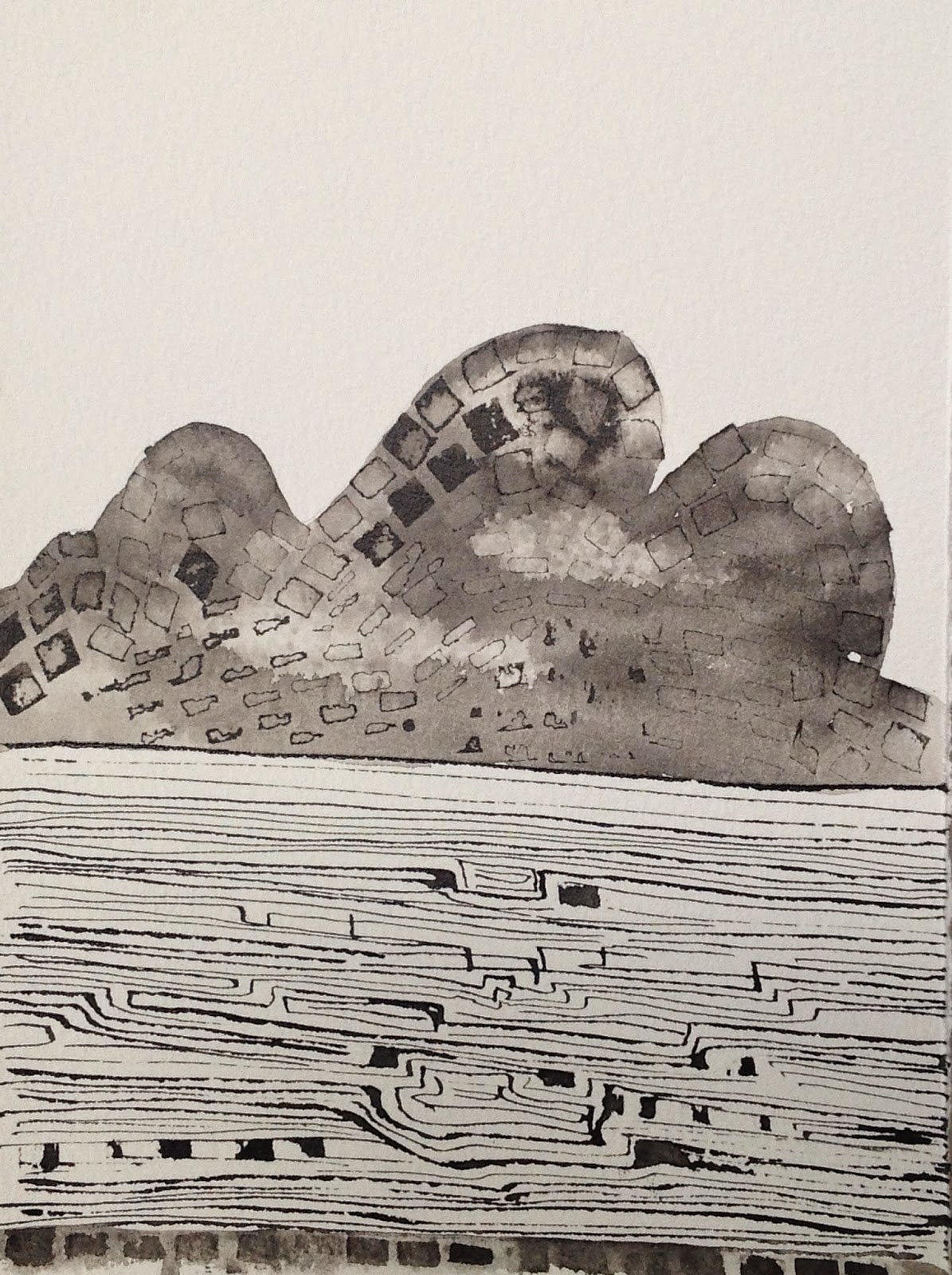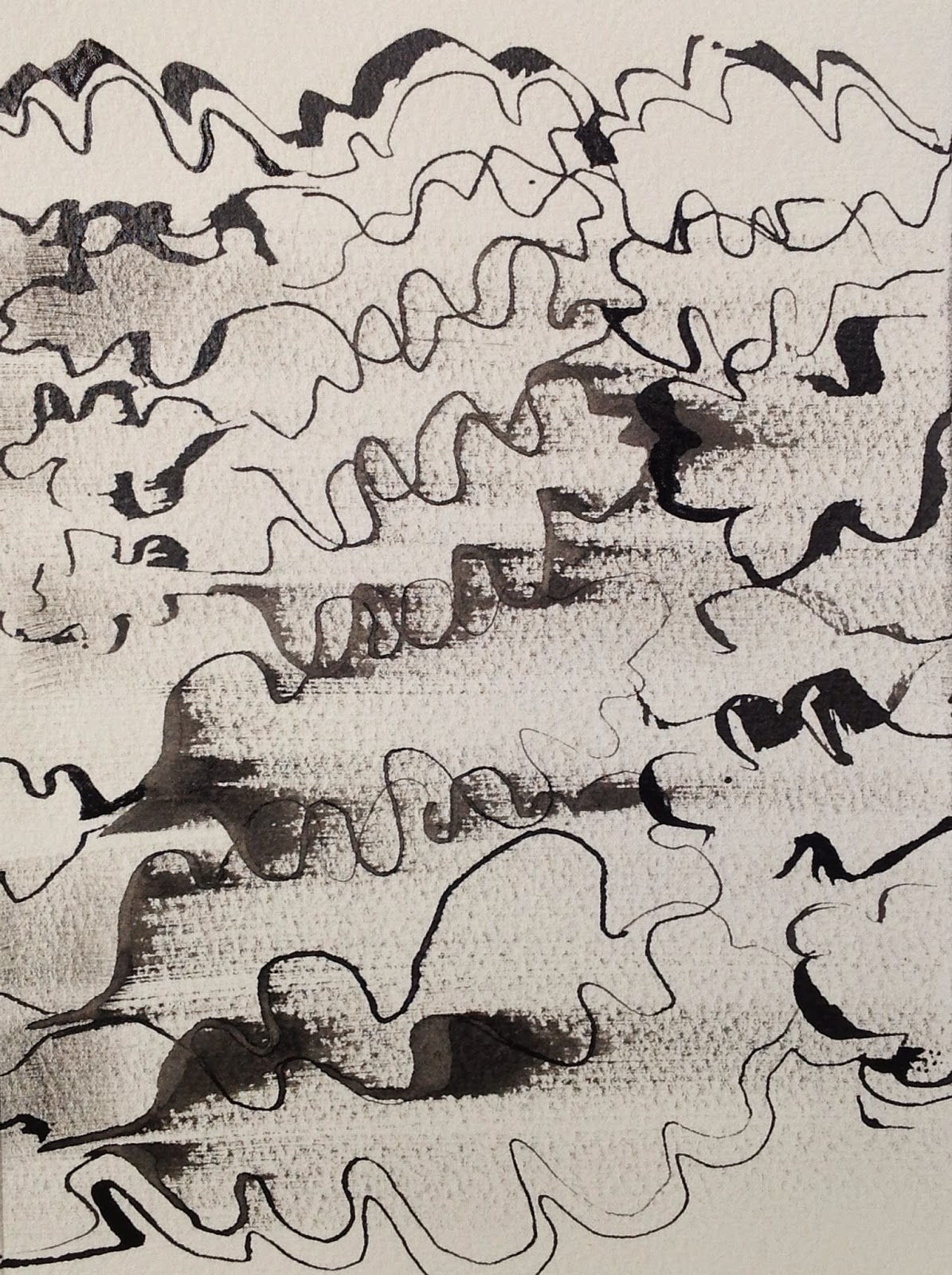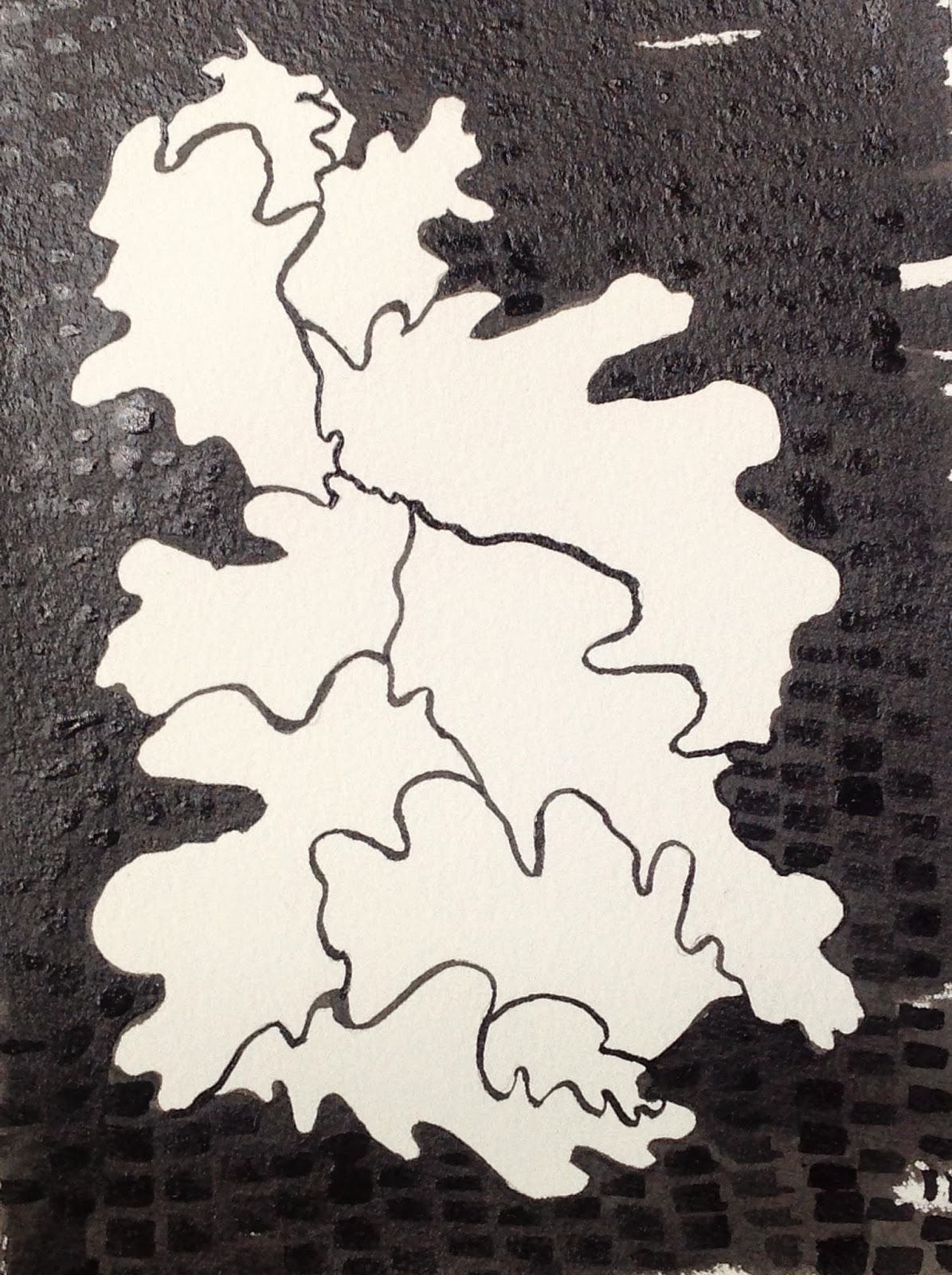Following on from tutorial with Mandy I decided to produce small ink drawings referencing my sketch book as per 'Hommage a Queneau' by Colin Crumplin, an idea which was originally suggested by Angie Cockayne as a method of 'getting to know my object'. Using Somerset off white textured watercolour paper and ink my aim is to produce an initial 10 images of each individual component, i.e. tree, acorn, leaf, bark, flower and oak galls. Once complete I will experiment with presentation, format, placement in order to assess and re evaluate. This will provide an opportunity to look at the images together to assess how they work as one piece. Thought has already been given to cropping, resizing and reproducing images using alternative print approaches, i.e. woodcut, photo etching but realistically I feel that time is a constraint and that focus should be maintained around these ink drawings alongside my more painterly monotypes. I have in mind to perhaps produce an Artist Book using an innovative presentation but must confess to reservations around this concept.
My attempt at a cubist style image of acorn. Mark making is quite prescriptive and controlled. It is an image that resonates with my aesthetic 'eye' with fine line, dark shapes and overlaying of imagery The varying scale and views all contribute to an interesting composition. I plan to crop this image to form a square shape which will perhaps emphasize and introduce the juxtoposition of two geometric shapes and emphasize the form of the acorn.

































%2BMoonrise%2Bover%2Bthe%2BSea%2B.%2BUnfinished%2Bmezzotint.%2B154%2Bx%2B201%2Bmm..jpg)




